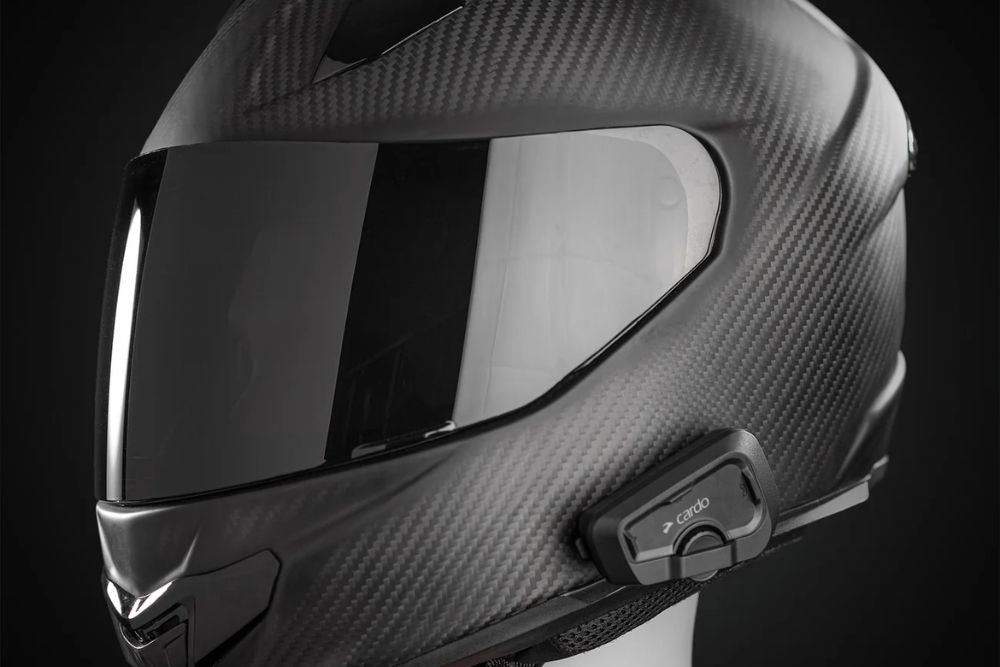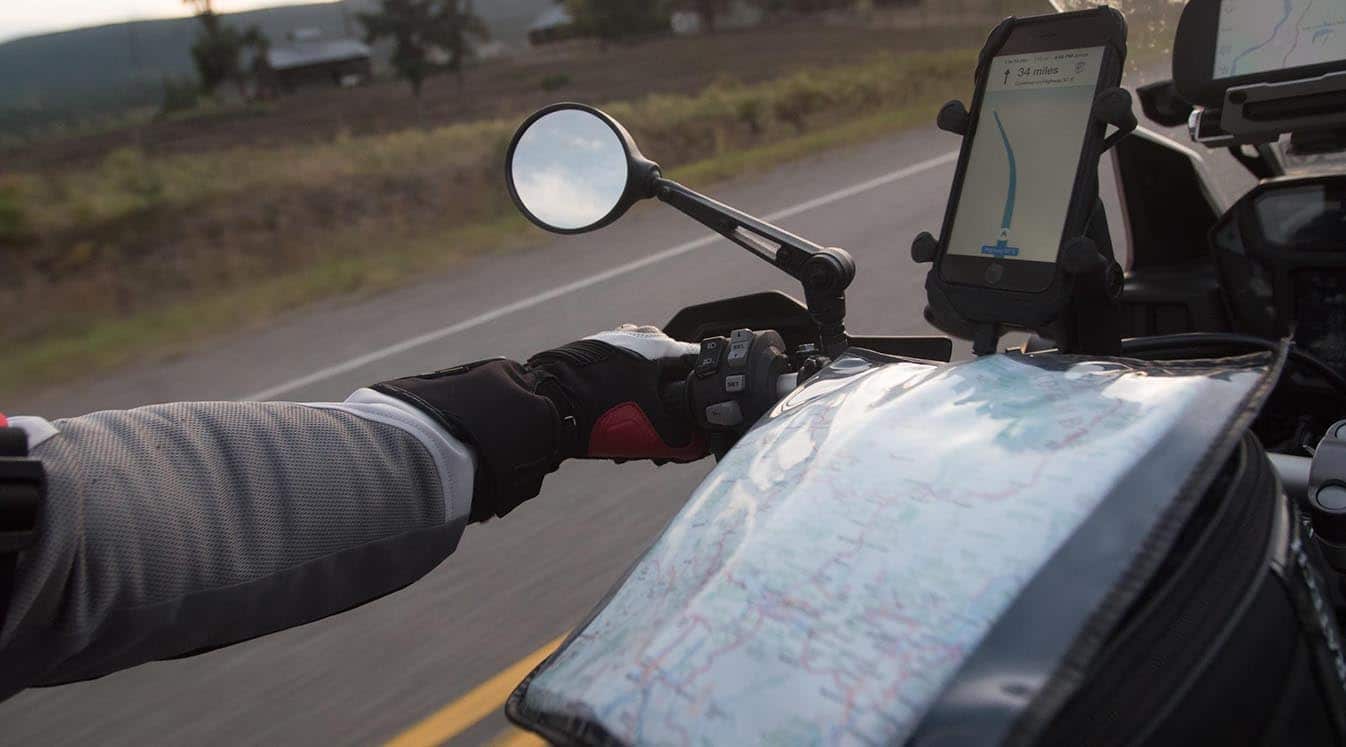As long-distance riders, we live for winding country roads, steep mountain parkways and picturesque byways that hug the coast. The scenic route was made for us. Carving our way through America or wherever we are in the world, we love to soak up all the sights, sounds and smells of the open road, but it’s the thrill of the ride that makes it all so enjoyable. The breeze and the pure joy of the cruise. But, of course, motorcycle touring has its challenges, too—there’s no trunk, no roof and (probably) no cruise control. But this shouldn’t be enough to keep the adventurous rider local. A little planning goes a long way when you’re rolling your way across the map.
Things to Do Before Hitting the Road
It doesn’t matter if you’re journeying across the nation or taking a two- or three-hour ride out to the countryside, the pre-ride protocol is the same: Inspect, inspect and inspect again. Two or three weeks before you leave, have your bike looked over by a professional, have the oil changed and top off any fluids. Make sure you do this a few weeks out so that you have time to make repairs, replace tires, etc. based on what your mechanic advises.
Speaking of inspecting, it’s important that you know how to perform a thorough T-CLOCS inspection to keep your bike in tip-top shape as you travel. The fact is that you and your motorcycle will take a beating in the face of bugs, debris and the occasional rough road. This daily inspection protocol covers tires and wheels, controls, lights and electrical, oil and fluids, chassis and stands and will help you spot anything that could be an issue on your trip. Perform a T-CLOCS inspection every morning before you get on your bike and know how to make the necessary adjustments as needed for long-distance safety.
Some other key things to do before you embark on a long-distance tour:
- Let friends and family know your general itinerary and plans, with specific routes
- Get a good night’s rest, eat a healthy meal and drink plenty of water
- Plan out a few strategic detours to soak up fun sights and unique stops
- Check with fellow riders about their favorite routes and the best roads
- Get comfortable with any new accessories and test them out beforehand
- Reset the trip meter so you know exactly how many miles you’ve covered
What You Need for a Safe and Fun Long-Distance Ride
Planning a long-distance motorcycle ride comes down to setting yourself up to be safe, comfortable and prepared for anything, no matter if you’re competing in a thousand-mile rally or are cruising solo and have tossed your map to the wind. Besides making sure your bike is in tip-top, road-ready condition, you’re going to want to stock up on a few motorcycle accessories and essentials before you shove off. The following list includes our can’t-live-without road trip gear. Let us know if you’ve got some to add!
1. Ride in Touch: A Motorcycle Communication Device
As purveyors of top motorcycle communication devices, it’s hard for us to imagine going on a long-distance ride without some means of communicating with others. Our devices combine all-in-one motorcycle communicators with the best motorcycle helmet speakers, so you get crystal-clear audio, even when you’re making serious headway on the highway. A helmet intercom lets you control your phone via Bluetooth, so you can answer calls, make calls and control your phone—including your GPS—with the sound of your voice or a quick tap of the finger.
| What a Motorcycle Headset Can Do for You |
|
Riding with a buddy or a club? These devices are specifically made for group riding and feature a unique technology that lets you stay connected with up to 15 riders in your vicinity. What’s cool about contemporary motorcycle communication devices is that they sync with your phone, so you can get in the groove and rock out to your favorite Spotify or Pandora playlists or stay entertained with a binge-worthy podcast. They can also help you stay alert to weather conditions and traffic, so you never find yourself in a less-than-ideal scenario on the road. Connect with other riders using the PACKTALK BOLD.
2. Ride Stocked: Onboard Luggage and Storage Solutions
One of the reasons why riding is so fun is because your bike is lightweight and agile, but the compromise is that it doesn’t have a ton of room for extra cargo. With that being said, there are a few trip-friendly storage options you can use to lug all your stuff. You will want to combine some or all of the following onboard luggage options, so you have enough storage space for all the essentials we’ll be covering below.
- Hard Storage—We recommend investing in a hard luggage pannier system for your long-distance ride, simply because it’s best equipped to handle the inevitable barrage of rocks, dirt, dust, bugs and rain that will be thrown its way on your adventure. Hard cases are also less likely to shift around while you’re riding. Generally, hard panniers are made of aluminum or a durable plastic, sometimes with a foam interior for more protection. The better brands make them waterproof, dustproof, impact-resistant and chemical-resistant.
- Soft Storage—Soft luggage includes saddlebags as well as bags made to attach to the sissy bar, trunk, tail or tank of your bike. Typically, they’re made from a thin, flexible material that compromises protection but makes luggage significantly lighter in weight. Make sure to never put anything precious or valuable in your soft panniers. As many riders do, you may want to mix and match hard and soft luggage options in order to keep valuables well-protected without weighing down your bike too much.
3. Ride Comfortable: Head-to-Toe Comfort and Protection
As a casual cruiser, you already know that improper riding gear is not only unsafe and unwise, but also downright uncomfortable. Adhering to the ATGATT philosophy (that’s all the gear, all the time for all the non-bikers out there) is vital no matter if you’re riding for a day or a week. Dressing for a long tour comes down to protecting your body from head to toe, and the following components are clutch.
- Helmet—A full-face helmet is a non-negotiable for long rides. The primary reason for this is safety, of course—helmets save nearly 2,000 lives every year, according to the CDC. But you also get the added bonus of protection against harsh wind and bugs, not to mention the option to integrate a communication device and helmet speakers to keep you connected and entertained.
- Earplugs and Eyewear—The constant rumbling of the motor and the loud, whipping wind can do serious ear damage and take away from the enjoyment of the ride, so make sure to pack earplugs. Wear contacts (and pack a backup pair) and choose a helmet with a tinted visor so you don’t have to worry about squeezing glasses under your face mask.
- Electric Vest—Even if it’s the middle of summer, you’re going to get chilly if you’re riding through the mountains or at night. Plus, that cool riding breeze you love so much on hot summer days can chill you to the bone after a few hours of riding without stopping! A heated motorcycle vest or jacket is a simple way to ensure that you ride at a comfortable temperature, so you can focus on the road ahead.
- Gloves—Gloves are important during long-distance rides because your hands can get sore and wind-chapped after hours of riding exposed. Trust us, if you’ve got wrecked hands halfway through your journey, you’re not going to have much fun. Pick a full-protection glove with a retention strap and armor on the knuckles and palms.
- Boots—You already know why boots are among the most crucial pieces of motorcycle gear out there, so we probably don’t have to explain it. For touring, we just recommend picking a versatile pair that you feel good about rocking off-bike since you probably won’t have a ton of room to pack extra pairs of shoes.
- Riding Pants—The same strategy should be applied to your riding pants. Pick a pair that are protective yet comfortable. For the safest option, wear a pair of armored riding pants that could provide an extra layer of protection in the event of a crash.
4. Ride Prepared: Tools, Safety and Survival Gear
The amount of emergency gear you pack should depend on the length and location of your trip. If you’re heading completely off-grid—say along Needles Highway in South Dakota, just an hour south of Sturgis—you have to assume that you won’t have cell phone service or access to a gas station or mechanic. This is another reason why you want to invest in a helmet communication device! You can probably get away with a simple toolkit and some basic first-aid if you’re staying mainly in populated areas, but we always recommend taking the cautious route and packing extra.
-
Safety Kit—Every good rider should have the following safety items on hand during long- and short-distance cruises:
- Flares
- Fire extinguisher
- Rope
- Emergency poncho
- Duct tape
- Utility knife
- First-aid kit
- Emergency blanket
- Paper map
- Toolkit—Throughout your journey, belts will loosen and bulbs will go out, which is why you need to have some basic tools on hand. Build yourself a portable, travel-friendly toolkit that contains wrenches, screwdrivers, pliers, a tire gauge, a flashlight and other basic tools.
- Spare Parts—Sometimes, a little tightening and adjusting are all you need. Other times, a part replacement is in order. When this is the case, you can correct the problem quickly if you’ve got spare parts on board. We recommend packing some spare belts, bulbs, fuses, cables and wires and keeping them on board at all times as you cruise near and far.
- A Riding Cam—Should anything crazy happen—another driver tries to mess with you, an exotic animal crosses the road, the sunset is particularly amazing—a riding camera will get it on tape. You can capture the journey ahead of you by mounting a camera onto your helmet or even directly onto your bike. Just make sure to pick one that’s wind- and weather-proof.
- Documents—It seems obvious, but make sure you have some important documents with you before you set out on your long-distance journey. Pack your driver’s license, registration, insurance card, AAA card, emergency information card and some spare cash. Don’t forget to keep a copy of your owner’s manual on your bike, too.
Enjoy the Ride
With the wind in your hair and no agenda but your own, there are few things as fun, freeing and invigorating as logging some miles on your bike. The last thing you would ever want is for your trip to come to an end too soon, especially due to a preventable scenario such as poor weather or a rough road. Cardo Systems is here to help eliminate many of the challenges associated with motorcycle road-tripping, and our touring-ready communication devices really go the distance!





